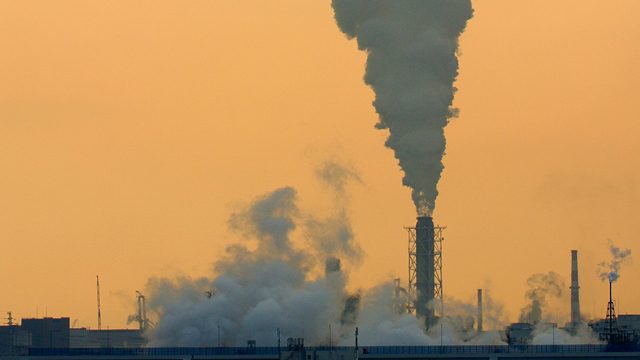SUMMARY
This is AI generated summarization, which may have errors. For context, always refer to the full article.

PARIS, France – Earth could warm 2.7ºC this century, warned a review Thursday, October 1, which judged national carbon-cutting pledges insufficient to stave off worst-case-scenario predictions for climate change.
The goal of limiting overall planet warming to 2.0ºC (3.6ºF) from pre-industrial levels is still out of reach, the Climate Action Tracker (CAT) analysis found – though there are signs it may be inching into view.
In rare good news, 2.7º C was a “significant improvement” from the CAT’s previous forecast of 3.1ºC by 2100, said a statement issued by the quartet of research bodies which compiled the report.
But the pledges submitted ahead of an informal October 1 UN deadline would still yield “global warming well above the 2.0ºC limit set by the global community,” said a CAT statement.
“This reflects the less than sufficient climate targets submitted by many governments.”
The UN’s climate science panel says a world even 1.0ºC or 2.0ºC warmer would face “considerable” risks, including more severe floods and droughts, a land-gobbling sea-level rise, the spread of disease and food shortages – all of which may increase global political instability.
The tracker analyzed country plans for curbing climate-altering greenhouse gas emissions, known as Intended Nationally Determined Contributions or INDCs, which will form the backbone of a universal climate rescue pact to be inked at a UN conference in Paris in December.
Just over 140 countries out of 195 negotiating the global agreement, which will enter into force in 2020, had filed their contributions by Thursday – setting either 5- or 10-year emissions targets for themselves.
Representing nearly 80% of global emissions, the pledges included top 3 polluters China, the United States and the 28-member European Union.
The CAT prediction also included estimated numbers for fourth-placed India, which has not yet formally pledged, but has made public statements on its intentions.
This was the first time since 2009, when the CAT analysis began, that the forecast has dipped under 3.0ºC – a change caused in large part by China’s pledge, which could see its emissions of carbon dioxide, the most ubiquitous greenhouse gas, peak in the late 2020s.
“The INDC process has clearly led to progress,” said Bill Hare, a founder of Climate Analytics, one of the research groups which contributes to CAT.
“But it is clear that in Paris governments must consider formally acknowledging that their first round of climate plans for 2025 and 2030 will not hold warming below 2ºC.
Regular ramp-up needed
Climate envoy Laurence Tubiana of France, which will host the November 30-December 11 UN haggle, said the pledges to date marked a “very important step – we are nearing the scenario we had hoped for.”
Looking forward, she added, “the essential part is that we put in place rules so that countries can ramp up their contributions regularly” after the Paris conference, she told Agence France-Presse.
The CAT analysis looked at countries responsible for over 70% of global emissions and extrapolated for the rest.
To get on the path to 2ºC, annual greenhouse gas emissions would have to be 11-13 billion tons lower in 2025 than those pledged, and 15-17 billion tons lower in 2030, it found.
Based on current INDCs, emissions would be 52-54 billion tons of CO2 equivalent (GtCO2e) in 2025 and 53-55 (GtCO2e) in 2030 – more than today’s estimated 48 GtCO2e per year.
The UN’s Intergovernmental Panel on Climate Change (IPCC), recommends slashing emissions by 40-70% by 2050 from 2010 levels and to near zero or below by 2100 for any chance at 2ºC.
It was “not very likely” that submissions by countries which have not yet filed their pledges would get us closer to 2ºC before Paris, Hare told Agence France-Presse.
“Falling below 3ºC is symbolically important, but insufficient,” added Jean Jouzel, IPCC vice president.
“The further we are from 2ºC, the more difficult it will be to adapt (to climate change-induced challenges), especially for developing countries,” he told Agence France-Presse.
The planet is already 0.8ºC warmer on average than at the start of the Industrial Revolution in about 1760. – Mariette Le Roux, AFP / Rappler.com
Add a comment
How does this make you feel?
There are no comments yet. Add your comment to start the conversation.